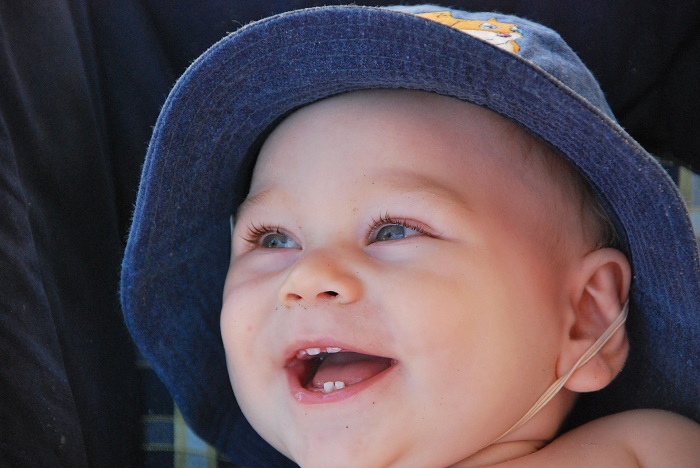While children grow, they will hit so many developmental milestones over multiple years. These milestones include learning to walk, talk, read, write, and so much more! However, they also achieve five important dental milestones starting from around the age of six months, and going into adulthood. Let's take a look at what these dental milestones are and what to expect as a parent of children who are reaching these milestones.
1. Teething Begins
Teething will likely be one of the most uncomfortable times for your child. It is described as the eruption of a tooth or teeth from the gums and causes discomfort in your baby’s jaw and gums. It is important to remember that teething occurs in stages, and each baby will grow teeth at a different rate. Instead of worrying about why your baby hasn’t started growing any around the average age of six months, focus on how you can relieve the teething process when it does arrive.
Six months after the first tooth has appeared, you should plan to take your baby to the dentist. Studies show that more often than not, parents wait to take their children to the dentist until they are about two and a half years old, which is far later than when is recommended by dental professionals. Beginning dental care as a baby will not only help reduce anxiety related to going to the dentist later on, but it will also ensure that your baby’s teeth are being properly cleaned and growing in just how they should be.

2. Teething Ends
By ages two to three, your toddler should be growing out of the teething phase, meaning they should now have a full set of primary (baby) teeth! If you notice that your child has not grown in all of his or her teeth by age three, they need to see a pediatric dentist.
With the end of the teething stage comes the most difficult part: growing in the molars. This can not only cause your child extreme discomfort, but can also cause a fever, headache, or even a cold. Since children may not understand the cause of this pain, you should expect an excessive amount of crying from your child while their back teeth come in.
This milestone is where you can tell if there are issues regarding the child’s teeth. Issues can include but are not limited to overlapping teeth, underbites, or overbites. If you notice any problems in the way the teeth have grown, be sure to see a dentist at your earliest convenience. Primary teeth give an idea of how permanent (adult) teeth might look once they grow, so it is a good idea to get in front of the problem before it becomes a larger issue.
3. Primary Teeth Fall Out
Around the age of six and over the next few years, children will start losing their primary teeth, and permanent teeth will grow to replace them. We know what you’re thinking: “Oh no, not this again!” Don’t worry though! This process will be much less painful for your child than the first time they had teeth growing in. This is because the gums already have a spot for the permanent teeth to grow into. With that being said, your child may still experience slight discomfort while the permanent teeth come in.
More often than not, primary teeth will loosen and fall out naturally. However, they can fall out as a result of an impact. Since primary teeth are much softer than permanent teeth, it is recommended that children wear mouthguards if they participate in any sports that could result in an impact on the mouth area.

4. Getting Braces
Moving into their preteen years, children should have lost all of their primary teeth and have all of their permanent teeth grown in. If this is not the case for your child, don’t worry! Everyone’s teeth move at their own pace.
If you notice gaps, overlaps, or an under/overbite in your child’s teeth, you may want to look into getting braces. It is best to get them early on since permanent teeth are easier to move when they are fairly new, rather than waiting until the child grows into a young adult.
It is important to remember that not all children will need braces. It is dependent on the child and how their permanent teeth grow in and align together. Furthermore, there are several types of braces and alternative orthodontic treatments available to today's pediatric patients, including invisible aligners.
5. Wisdom Teeth Removal
Wisdom teeth are often referred to as “third molars.” Most people will have all four, one in each quadrant of the mouth. However, some people may have none, fewer, or more than the typical four. It is extremely rare to have more than four (but not impossible) and these are called supernumerary teeth.
When growing in, wisdom teeth can cause pain and discomfort, but they can also crowd your mouth, causing your other teeth to shift and possibly overlap. These are the main reasons that dentists recommend getting them removed (aside from the fact that modern dentists deem them unnecessary). Another reason is that if a wisdom tooth doesn’t fully erupt from the gums, it can cause pericoronitis – a bacterial infection of the gums.
Make a Pediatric Dentist Appointment with Dr. Kevin Mahoney!
At any point of these five milestones (and forever after these milestones have been reached), you and your child should be visiting a pediatric dentist at least twice a year. Teeth must be cleaned regularly to prevent tooth decay, prevent plaque, stop gum disease, and ultimately improve your smile. Looking for a local dentist for your family in Erie, PA? Get in touch with us today and see what we can do for you!

